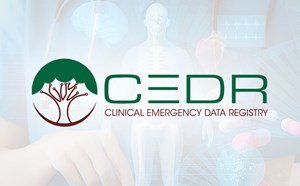
Digital Health Partnerships for Innovation in Emergency Medicine
In 2016, the U.S. invested $4.2B in digital health companies seeking to optimize healthcare, reduce spending waste, and transform the care-delivery process.1 While some early success is evident, well-funded technology or electronic health records (EHRs) alone can’t drive the innovation that today’s health systems need.
The benefits of industry-led innovation with respect to its speed and efficiency are clear: in a matter of months, digital health companies can develop an idea, assemble a team, build a minimal-yet-viable product, and be ready to pilot. But in healthcare and specifically EDs, without the clinician’s subject matter expertise and profound understanding of the care-delivery process, digital health companies face a critical barrier in understanding which problems to solve and how to implement and validate products in ways that emergency physicians (EPs) and the broader healthcare system can and actually will use.
Furthermore, digital health products that aim to build clinical decision support (CDS), optimize workflow or efficiency, reduce variability, and align with best practices often require integration within the clinical workflow and EHRs. These integrations, however, can be complex, preventing easy integration and data exchange needed for today’s innovative CDS solutions.
Today, many academic centers around the country are moving from abstract idealism to concrete action and pursuing the innovation center model. We explored this model/approach in our own ED with an academic-industry partnership where we assembled a team of subject matter experts alongside a selectively chosen digital health company to develop more effective ways to leverage decision science to solve a clinically important problem in the ED. Clinical informaticists or IT personnel certified by the EHR vendor built the connections between the new technology and the EHR – a single instance of Epic2 across our entire health network and EDs. Prior to integration, where applicable, our researchers defined the study outcomes using modern pragmatic research designs and held the technology to the test. The goal was to guide the company to solve the right problems and ensure its technology meet the requirements of its users and its proposed use case.
Our initial pilot using this model was the creation of SMART Pathways, an adaptive CDS tool that we developed in partnership with a digital health company to close the gap in how we translate best practices in the form of clinical pathways to clinicians at the point of care. With the explosion of medical knowledge and biomedical research, we recognize it’s untenable for each individual EP to stay up to date on best practices for every single clinical decision. Additionally, some clinicians may lack the skills for appraising the literature,3,4 especially when there is a paucity of evidence.4 In the 5 years prior to the rollout of SMART Pathways, our ED created more than 60 clinical pathways to guide clinical decision making of patients in the acute care setting. While these pathways represented best practice and a local standard of care, they existed in static form (paper, PDF), and clinicians frequently cited the lack of EHR integration as a key barrier to use.
Leveraging our digital health partner’s technology, which specializes in publishing clinical workflows and linking workflows to orders within the EHR, we embedded our clinical pathways into the EHR so they could be easily accessed by clinicians. Now, in a single-click, the EP can order directly off the pathway and see any relevant decision logic for managing the patient’s problem. Key tools needed to deliver standardized care are displayed, including initial recommended orders, risk scoring tools, appropriate consults and order sets. In this way, our pathways leverage some of the existing workflows and order sets that were already developed and in use.
The result was a more adaptive and dynamic CDS tool that brought a modern user interface, coupled with decision logic, easy order entry, and documentation assistance to the EP. Over the last year, pathway usage has steadily increased with marked decrease in the lengths of stay for those patients whose care was guided by a clinical pathway - a publicly reported quality measure. SMART pathways have now been adopted by other departments – including surgery, oncology, and cardiology – suggesting acceptance of this type of adaptive CDS.
Looking back, it’s clear that without the academic-industry partnership and the sandbox environment made possible by the ED and innovation center, none of this would have been possible.
We learned that healthcare systems and the clinical experts they house have significant value to offer digital health companies in realizing their potential by providing a living lab to implement and validate their technology. EDs, as the hub for most heath systems offer a unique place to test such technologies. We believe digital health companies will increasingly require this kind of collaboration to succeed as other customers expect this type of validation, experience, and guidance by clinical partners.
Likewise, digital health companies offer significant value to hospital systems, bringing novel technology along with their developmental resources to help solve important problems facing clinicians. In addition, academic-industry partnerships foster potential collaborations for grants and scientific publications as technologies are studied and their impacts are realized, supporting the academic partner’s strategic mission for research in addition to clinical care and education.
As evidenced in the creation of SMART Pathways, co-development of digital health solutions can be a win for both partners, helping advance the EHRs capabilities and care delivery process using new technology, and improving the care we provide to our patients.
References:
- Rock Health. 2016 Year End Funding Report: A reality check for digital health. 2016.
- Epic Systems. Accessed June 13, 2017.
- Milner M, Estabrooks CA, Myrick F. Research utilization and clinical nurse educators: A systematic review. J Eval Clin Pract. 2006;12(6):639-655.
- Lavis JN. Research, public policymaking, and knowledge-translation processes: Canadian efforts to build bridges. J Contin Educ Health Prof. 2006;26(1):37-45.
Foster R. Goss, DO, MMSc, Kelly J. Bookman, MD, Richard Zane, MD, Jennifer L. Wiler, MD, MBA
University of Colorado, Department of Emergency Medicine, Aurora, CO, USA
University of Colorado School of Medicine



